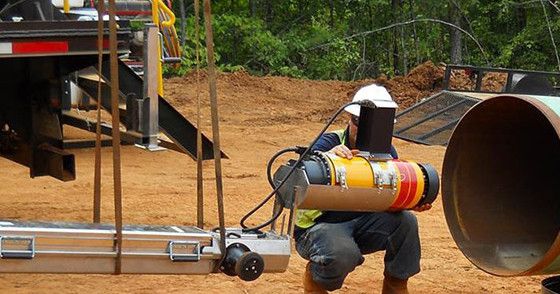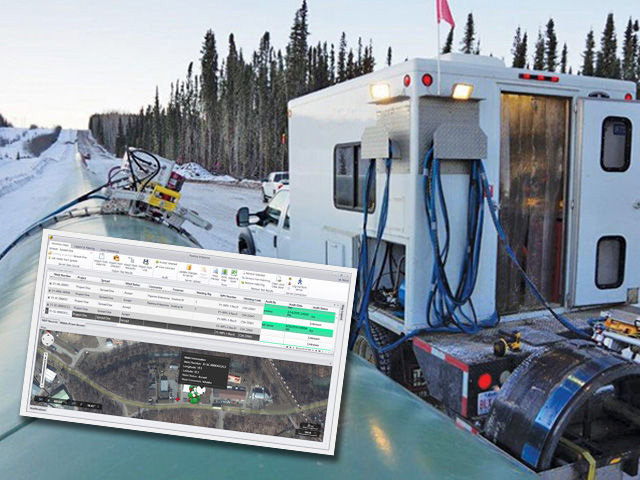Advanced Techniques in Pipe Welding Assessment: Innovations and Technologies for Boosted Precision and Dependability in Weld Analysis
The landscape of pipe welding examination is undertaking a significant improvement, driven by advanced methods that assure to improve both accuracy and reliability in weld analyses. Innovations such as automated evaluation systems and progressed imaging modern technologies are redefining standard practices, while non-destructive screening methods guarantee product integrity is preserved.

Relevance of Weld Assessment
Making certain the integrity of pipeline welds is vital to the overall security and reliability of commercial systems. Strenuous evaluation of welds is essential to the lifecycle of pipeline infrastructure.
The relevance of weld evaluation expands beyond plain conformity with regulative requirements. It functions as a positive procedure to identify and fix imperfections, such as insufficient blend, porosity, or cracks, before they intensify right into major issues. Efficient assessment techniques likewise add to the durability of pipes, decreasing maintenance costs and enhancing functional efficiency.
Additionally, detailed weld inspections foster trust fund amongst stakeholders, including governing bodies, investors, and the areas served by these pipes. By ensuring that all welds meet the needed standards, companies can alleviate threats and promote their online reputations. In recap, weld evaluation is crucial not only for operational stability however likewise for the broader implications it holds for safety and security and ecological stewardship.
Automated Assessment Solutions
The assimilation of automated inspection systems in pipe welding has actually changed the technique to making certain weld top quality and honesty. These systems utilize sophisticated robotics and expert system to carry out assessments that are not just faster however likewise more consistent than typical approaches. Automated systems can cover extensive sizes of pipelines effectively, recording data that human assessors might neglect due to tiredness or ecological conditions.
Among the key advantages of automatic inspection systems is their capability to run in dangerous settings, lowering the risk to human assessors. They use numerous non-destructive screening (NDT) techniques, such as ultrasonic testing and magnetic fragment inspection, to analyze weld integrity without jeopardizing the framework. The data collected is refined in real-time, permitting prompt feedback and prompt restorative activities when issues are determined.
Furthermore, automated systems help with the standardization of examination processes, ensuring that each weld is evaluated against regular standards. This not only improves the dependability of outcomes but also streamlines compliance with regulative standards. As markets continue to prioritize safety and functional performance, the function of computerized examination systems in pipeline welding will definitely expand, leading the method for a lot more advanced high quality assurance methodologies.
Advanced Imaging Technologies
Frequently employed in modern-day pipeline welding assessments, progressed imaging technologies have actually substantially improved the capacity to identify and analyze weld issues. Techniques such as electronic radiography, calculated tomography, and thermographic imaging provide examiners with high-resolution photos that disclose sub-surface imperfections and structural inconsistencies that may be unseen to the naked eye.
Digital radiography utilizes digital sensing units to catch pictures, enabling prompt testimonial and boosted image comparison. This leads to faster assessments and enhanced accuracy in recognizing essential problems. Calculated tomography, on the other hand, provides three-dimensional imaging, enabling examiners to picture complex geometries and assess the stability of welds from several angles - Pipeline Welding Inspection. This deepness of evaluation is important for discovering problems that traditional approaches might neglect.
Thermographic imaging uses infrared technology to spot variants in temperature level, identifying locations of potential weak point or stress within the weld. These advanced imaging technologies not only boost flaw detection prices however additionally decrease the time and resources required for pipeline inspections. Consequently, they play an essential role in maintaining pipe security and integrity, making sure compliance with sector requirements while reducing functional risks.
Non-Destructive Testing Approaches
Utilizing numerous methods, non-destructive screening (NDT) techniques are important in pipeline welding inspections, permitting the assessment of weld integrity without jeopardizing the product's architectural integrity. NDT encompasses a series of methods, consisting of ultrasonic screening (UT), radiographic screening (RT), magnetic particle screening (MT), and color penetrant testing (PT) Each approach has distinct benefits and applications relying on the details needs of the evaluation.
Ultrasonic screening utilizes high-frequency sound waves to identify interior defects, giving accurate measurements of weld density and integrity. Pipeline Welding Inspection. Radiographic screening employs X-rays or gamma rays to generate images of the weld, exposing internal issues that may not show up externally. Magnetic bit testing works for spotting surface area and near-surface discontinuities in ferromagnetic materials, while dye penetrant testing highlights surface area splits by utilizing a colored dye
Integrating these NDT methods into pipe welding assessments improves the accuracy and dependability of weld assessments, making certain that potential failures are determined early. As industries require higher criteria for security and efficiency, the function of NDT in preserving the stability of bonded frameworks remains to be critical in pipe building and construction and maintenance.

Future Trends in Weld Evaluation
As we want to the future of weld analysis, developments in modern technology are positioned to revolutionize the techniques utilized for reviewing pipeline integrity. The integration of man-made intelligence (AI) and device discovering in assessment procedures is anticipated to enhance the accuracy of defect detection and anticipating maintenance. These modern technologies enable real-time information evaluation, allowing assessors to recognize prospective issues prior to they intensify into significant troubles.
Furthermore, using drones outfitted with advanced pop over to this site imaging systems is getting traction. These airborne inspections can cover vast areas swiftly, capturing high-resolution images and data that can be evaluated for flaws in hard-to-reach places. This not only enhances security however also raises efficiency in the examination process.
Additionally, the development of wise sensors embedded in pipeline systems supplies the possibility for constant monitoring. These sensing units can discover changes in stress, temperature, and vibrations, providing discover here useful insights into the health and wellness of the welds in time.

Verdict
To conclude, the assimilation of sophisticated strategies in pipe welding evaluation substantially boosts the precision and integrity of weld evaluations. Innovations such as automatic examination systems, progressed imaging technologies, and non-destructive testing methods play an important function in improving flaw discovery prices and fostering positive maintenance strategies. As these innovations remain to advance, they will certainly better ensure the security and efficiency of pipeline systems, eventually adding to the integrity of essential facilities.
